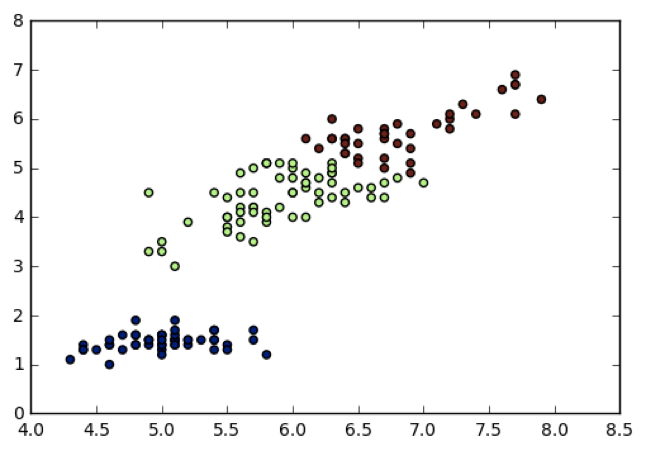Unsupervised Learning
Unsupervised Learning in Python

Benjamin Wilson
Director of Research at lateral.io
Unsupervised learning
- Unsupervised learning finds patterns in data
- E.g., clustering customers by their purchases
- Compressing the data using purchase patterns (dimension reduction)
Supervised vs unsupervised learning
- Supervised learning finds patterns for a prediction task
- E.g., classify tumors as benign or cancerous (labels)
- Unsupervised learning finds patterns in data
- ... but without a specific prediction task in mind
Iris dataset
- Measurements of many iris plants
- Three species of iris:
- setosa
- versicolor
- virginica
- Petal length, petal width, sepal length, sepal width (the features of the dataset)

1 https://scikit-learn.org/stable/modules/generated/sklearn.datasets.load_iris.html
Arrays, features & samples
- 2D NumPy array
- Columns are measurements (the features)
- Rows represent iris plants (the samples)
Iris data is 4-dimensional
- Iris samples are points in 4 dimensional space
- Dimension = number of features
- Dimension too high to visualize!
- ... but unsupervised learning gives insight
k-means clustering
- Finds clusters of samples
- Number of clusters must be specified
- Implemented in
sklearn("scikit-learn")
print(samples)
[[ 5. 3.3 1.4 0.2]
[ 5. 3.5 1.3 0.3]
...
[ 7.2 3.2 6. 1.8]]
from sklearn.cluster import KMeansmodel = KMeans(n_clusters=3)model.fit(samples)
KMeans(n_clusters=3)
labels = model.predict(samples)print(labels)
[0 0 1 1 0 1 2 1 0 1 ...]
Cluster labels for new samples
- New samples can be assigned to existing clusters
- k-means remembers the mean of each cluster (the "centroids")
- Finds the nearest centroid to each new sample
Cluster labels for new samples
print(new_samples)
[[ 5.7 4.4 1.5 0.4]
[ 6.5 3. 5.5 1.8]
[ 5.8 2.7 5.1 1.9]]
new_labels = model.predict(new_samples)print(new_labels)
[0 2 1]
Scatter plots
- Scatter plot of sepal length vs. petal length
- Each point represents an iris sample
- Color points by cluster labels
- PyPlot (
matplotlib.pyplot)

Scatter plots
import matplotlib.pyplot as pltxs = samples[:,0] ys = samples[:,2]plt.scatter(xs, ys, c=labels)plt.show()
Let's practice!
Unsupervised Learning in Python

